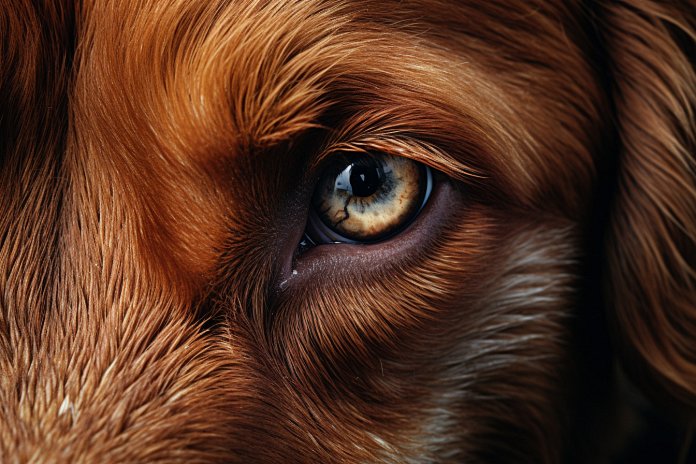
Feeling betrayed is a common emotion that can cause stress and upset. Many people wonder if their dogs can also feel betrayed, but there is no concrete proof of this. While dogs may show signs that resemble betrayal, they do not actually understand the concept of betrayal. Dogs can feel pain and fear, but not the same emotional pain as humans.
Signs of Feeling Betrayed
There are several signs that may indicate that your dog feels betrayed. However, these signs are more related to how they are treated and their expectations as your owner. For example, if you start giving more attention to a new pet, your dog may show signs of distress and disappointment. These signs may include being aloof, lying with their head on their paws, tail tucking, and moping. Your dog may also try to get your attention by pawing at you, staring at you, or following you around.
Body Language
Watch for signs of distress in your dog’s body language, such as whining, cowering, whimpering, averting their eyes, or raising their paw. Other signs may include moping, hiding or slinking off, being aloof, and loss of interest.
The History of Dog Emotions
Research has shown that dogs do experience emotions such as fear, aggression, disappointment, and what may appear to be betrayal. However, dogs do not feel these emotions for the same reasons as humans. Dogs may feel betrayed if their routine is disrupted or if they do not receive something they are used to, like going for a walk or getting table scraps. Dogs feel more of a disappointment rather than true betrayal. Humans have developed a strong bond with dogs over time and often project our own emotions onto them.
Science of Dog Emotions
Studies have shown that a trusting dog behaves differently from a distrustful dog. A dog that does not trust people may have been betrayed in the past, which can lead to fear or aggression. Dogs that have been betrayed may shake, sit in corners, turn away, or growl. These behaviors are a result of a loss of trust due to a negative experience.
Helping Your Dog Deal with Emotions
If you notice a change in your dog’s emotions, consider any major changes in their environment, such as a new baby, a new pet, or moving houses. These changes can cause your dog to feel betrayed. Take action to ensure that your dog’s routine is not completely disrupted by these changes. If there have been changes in your own lifestyle, such as a new partner or job, be mindful of how it may affect your dog. Pay attention to your dog’s body language and signs to understand their emotions and make necessary changes to help them.
Dogs may display signs that come across as feeling betrayed, but it is important to remember that dogs do not feel emotional pain for the same reasons as humans.

Tips & Things to Know
1️⃣ Be aware of your dog’s behavior and emotions: Dogs may exhibit signs of distress and disappointment, such as being aloof, moping, or trying harder to get your attention. While they may not feel betrayal in the human sense, these signs can indicate that they are upset about a change in their routine or environment.
2️⃣ Understand that dogs experience emotions differently: While dogs can feel emotions like fear, aggression, and disappointment, they do not express these feelings for the same reasons humans do. For instance, a dog may feel disappointed if it doesn’t get a walk when expected, which we might interpret as feelings of betrayal. It’s important to remember that dogs don’t have the same emotional understanding as humans.
3️⃣ Help your dog cope with changes: If there are major changes in your dog’s environment, such as a new baby, pet, or a move, it’s crucial to ensure that your dog’s routine is not completely disrupted. Even changes in your lifestyle can affect your dog’s emotional well-being. If you notice changes in your dog’s behavior, try to identify the cause and make the necessary adjustments to help them feel more secure.
Frequently Asked Questions, Answered ✅
1. Can dogs feel betrayed?
– Dogs can show signs that may come across as feeling betrayed, but it is not the same as human betrayal because they do not feel emotional pain for the same reasons.
2. What are some signs that a dog may display if it feels betrayed?
– Signs that a dog may display if it feels betrayed include being more aloof, lying with its head on its paws, tail tucking, moping, pawing at you, staring at you, or following you around.
3. Do dogs experience emotions like disappointment and betrayal?
– Dogs do experience emotions that we would class as disappointment and betrayal, but they do not feel these emotions for the same reasons as humans. For dogs, it is more of a feeling of disappointment rather than outright betrayal.
4. How do dogs show their emotions?
– Dogs show their emotions through body language, such as whining, cowering, whimpering, averting eyes, and raising their paws. They may also display signs like moping and sulking, hiding or slinking off, being aloof, and loss of interest.
5. What can be done to help a dog deal with fear and aggression?
– If a dog is displaying signs of fear and aggression, it is important to look for any major changes in its environment, such as a new baby, a new pet, or moving houses. Taking action to ensure that the dog’s routine is not completely disrupted and addressing any changes in the owner’s lifestyle can help the dog deal with these emotions.